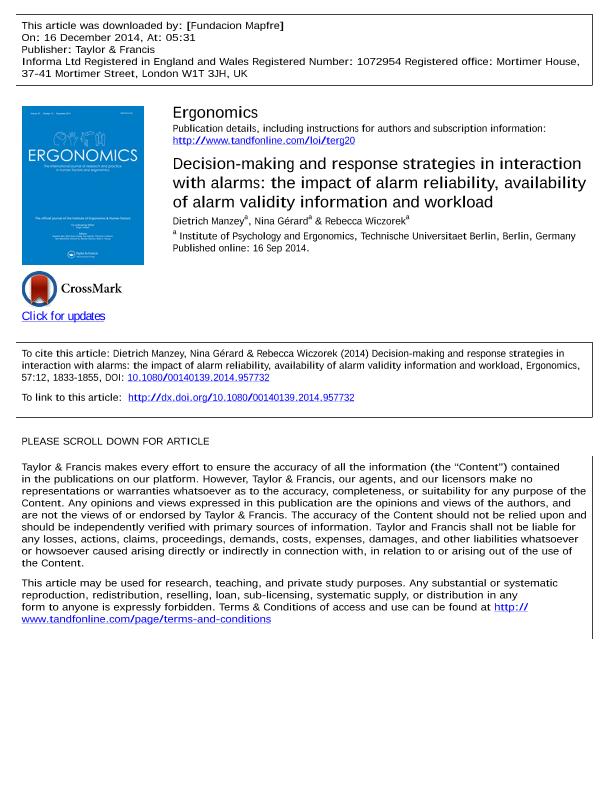Decision-making and response strategies in interaction with alarms : the impact of alarm reliability, availability of alarm validity information and workload

Contenido multimedia no disponible por derechos de autor o por acceso restringido. Contacte con la institución para más información.
| Tag | 1 | 2 | Value |
|---|---|---|---|
| LDR | 00000cab a2200000 4500 | ||
| 001 | MAP20140047291 | ||
| 003 | MAP | ||
| 005 | 20141216165955.0 | ||
| 008 | 141216e20141201esp|||p |0|||b|spa d | ||
| 040 | $aMAP$bspa$dMAP | ||
| 084 | $a875 | ||
| 100 | 1 | $0MAPA20080170592$aManzey, Dietrich | |
| 245 | 1 | 0 | $aDecision-making and response strategies in interaction with alarms$b: the impact of alarm reliability, availability of alarm validity information and workload$cDietrich Manzey, Nina Gérard, Rebecca Wiczorek |
| 520 | $aResponding to alarm systems which usually commit a number of false alarms and/or misses involves decision-making under uncertainty. Four laboratory experiments including a total of 256 participants were conducted to gain comprehensive insight into humans' dealing with this uncertainty. Specifically, it was investigated how responses to alarms/non-alarms are affected by the predictive validities of these events, and to what extent response strategies depend on whether or not the validity of alarms/non-alarms can be cross-checked against other data. Among others, the results suggest that, without cross-check possibility (experiment 1), low levels of predictive validity of alarms ( = 0.5) led most participants to use one of two different strategies which both involved non-responding to a significant number of alarms (cry-wolf effect). Yet, providing access to alarm validity information reduced this effect dramatically (experiment 2). This latter result emerged independent of the effort needed for cross-checkings of alarms (experiment 3), but was affected by the workload imposed by concurrent tasks (experiment 4). Theoretical and practical consequences of these results for decision-making and response selection in interaction with alarm systems, as well as the design of effective alarm systems, are discussed. | ||
| 773 | 0 | $wMAP20100019818$tErgonomics : the international journal of research and practice in human factors and ergonomics$dOxon [United Kingdom] : Taylor & Francis, 2010-$x0014-0139$g01/12/2014 Volumen 57 Número 12 - diciembre 2014 |

